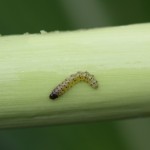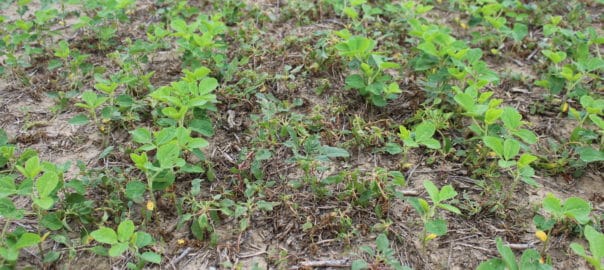
Moth traps catches clearly indicate that the first generation flight is peaking (link to moth trap catches). Local moth catches may vary considerably, and that is why we suggest running pheromone traps on your farm if you are growing non-Bt corn. The highest trap catches are on farms in U.S. Fish and Wildlife Refuges, primarily because they are not allowed to grow Bt corn. Please link to the publication below for more information about the management of this pest. Below, I’ve also provided the suggested treatment threshold for southwestern corn borers in non-Bt corn during the whorl stage. Continue reading


